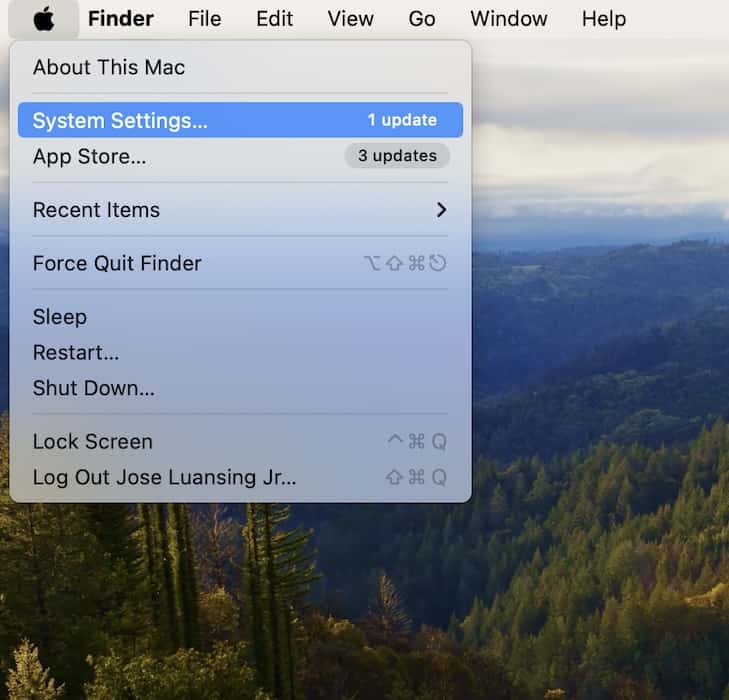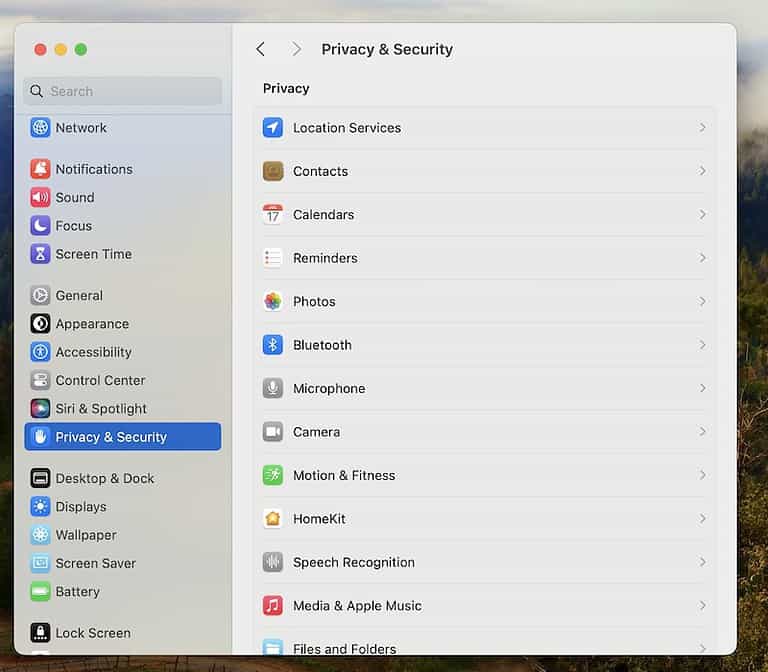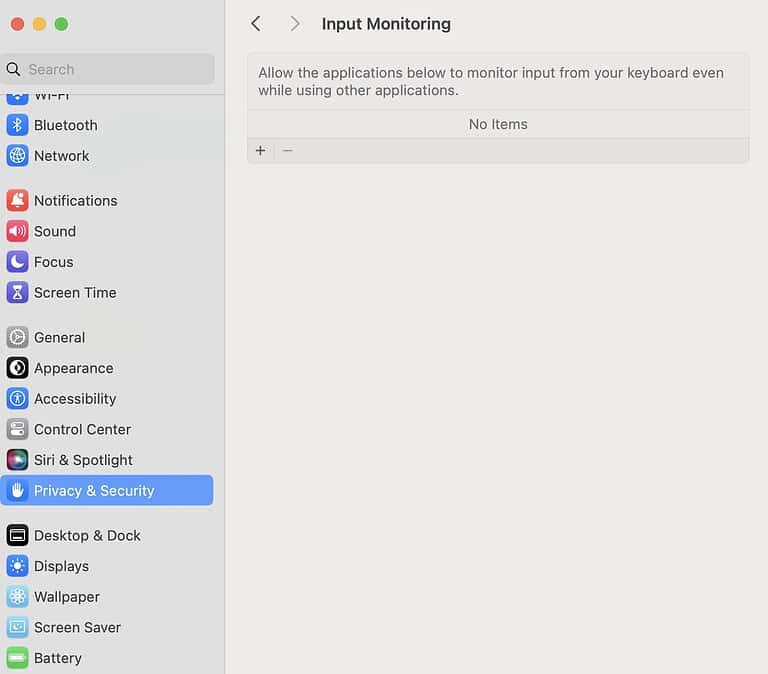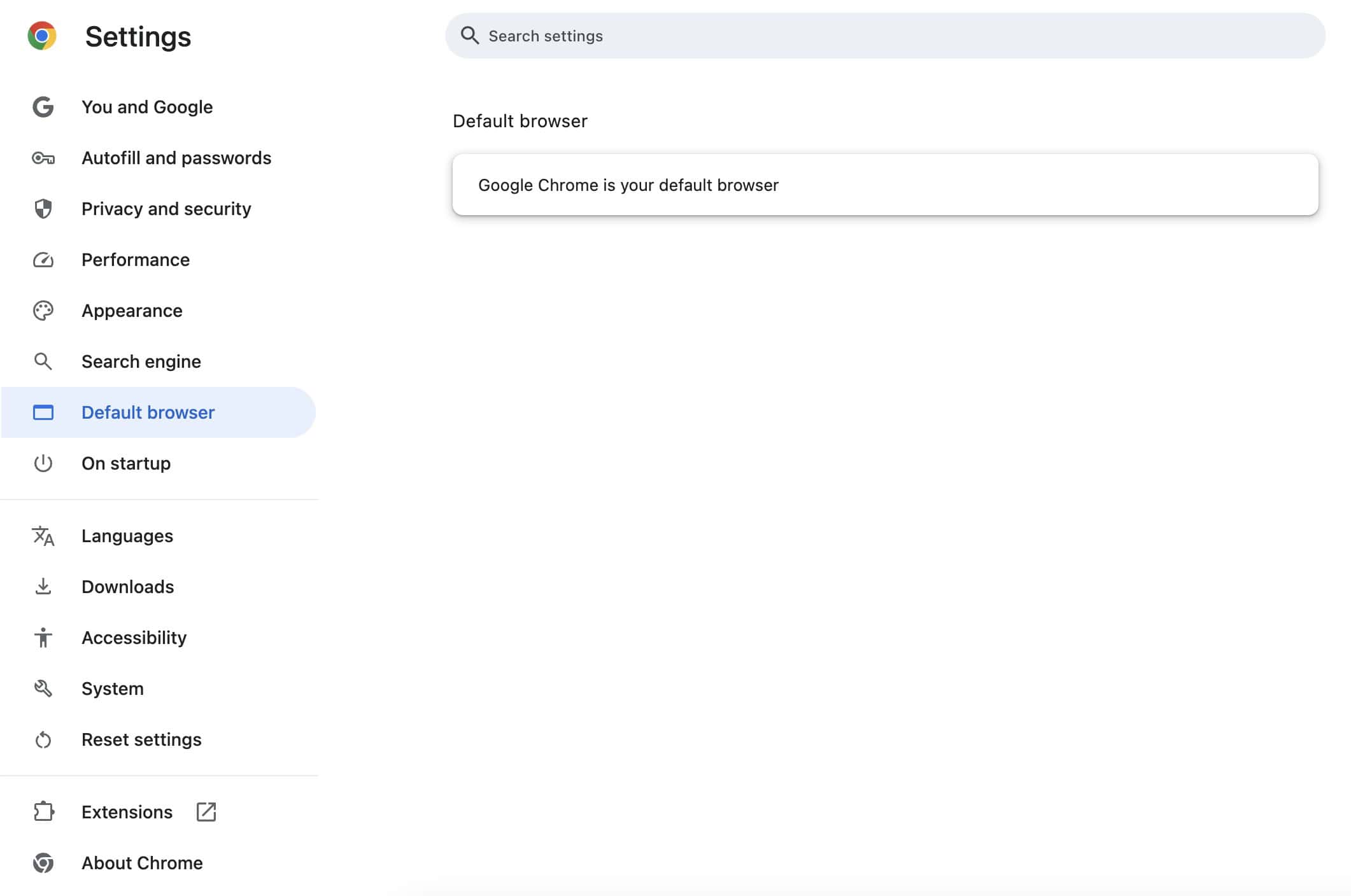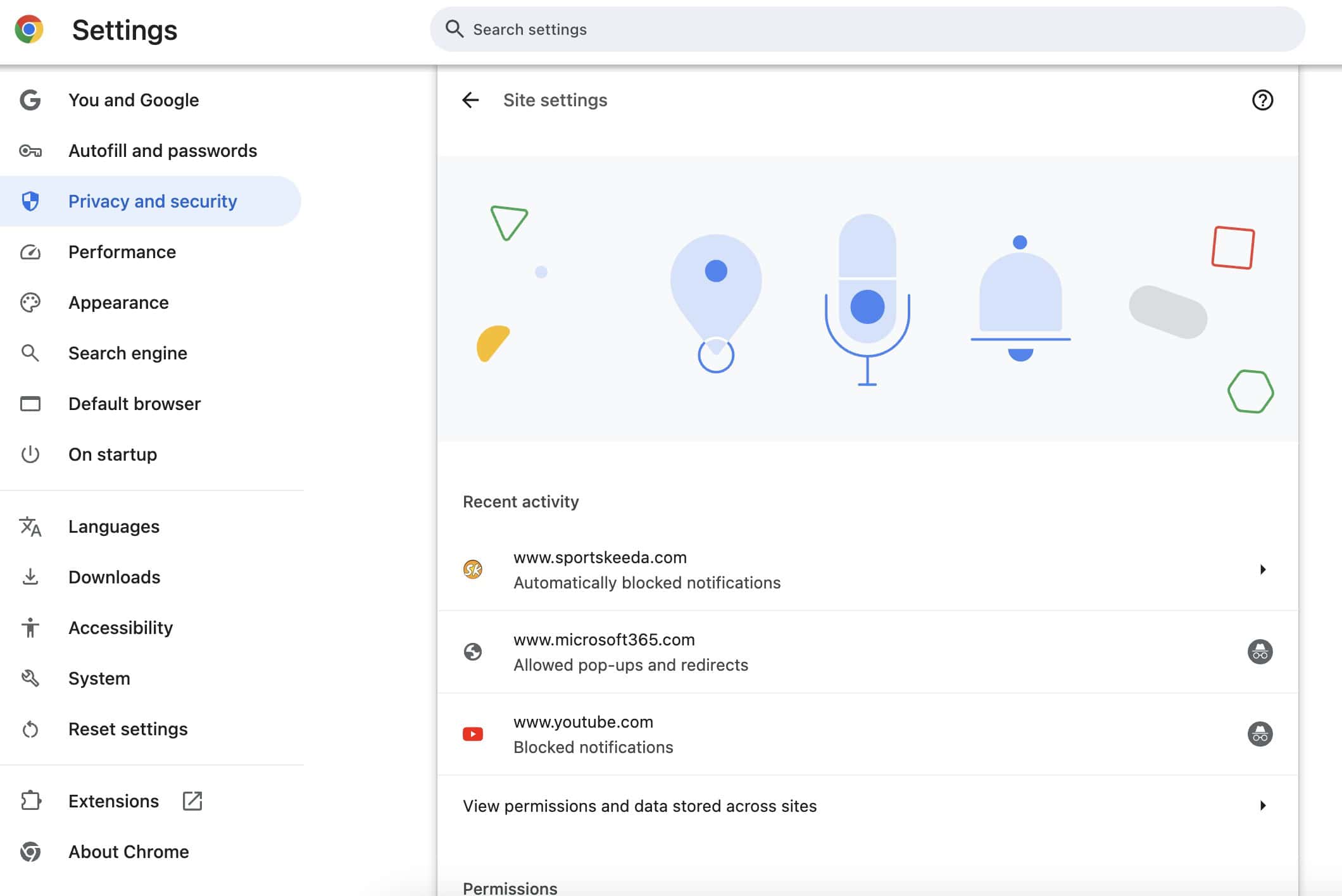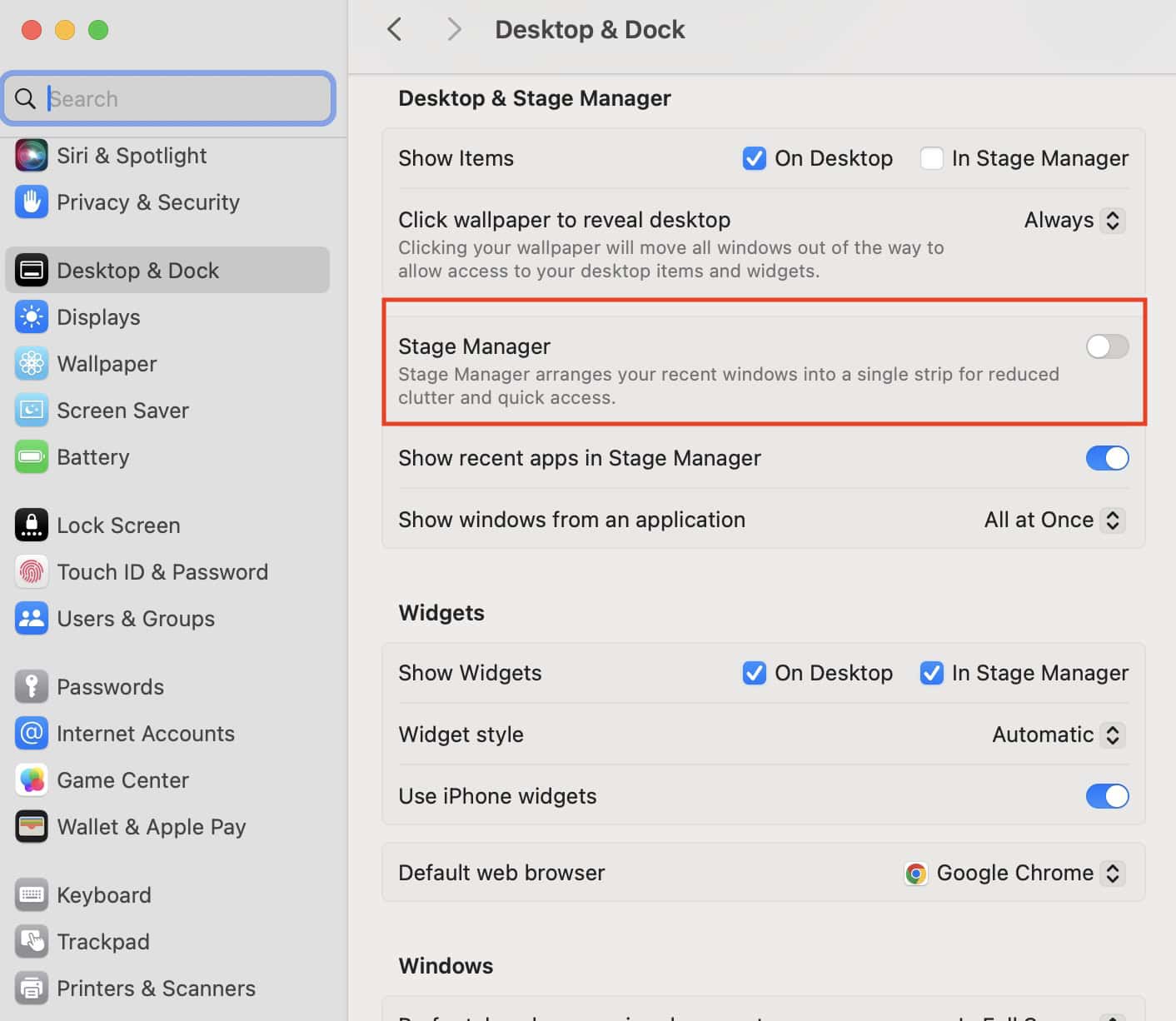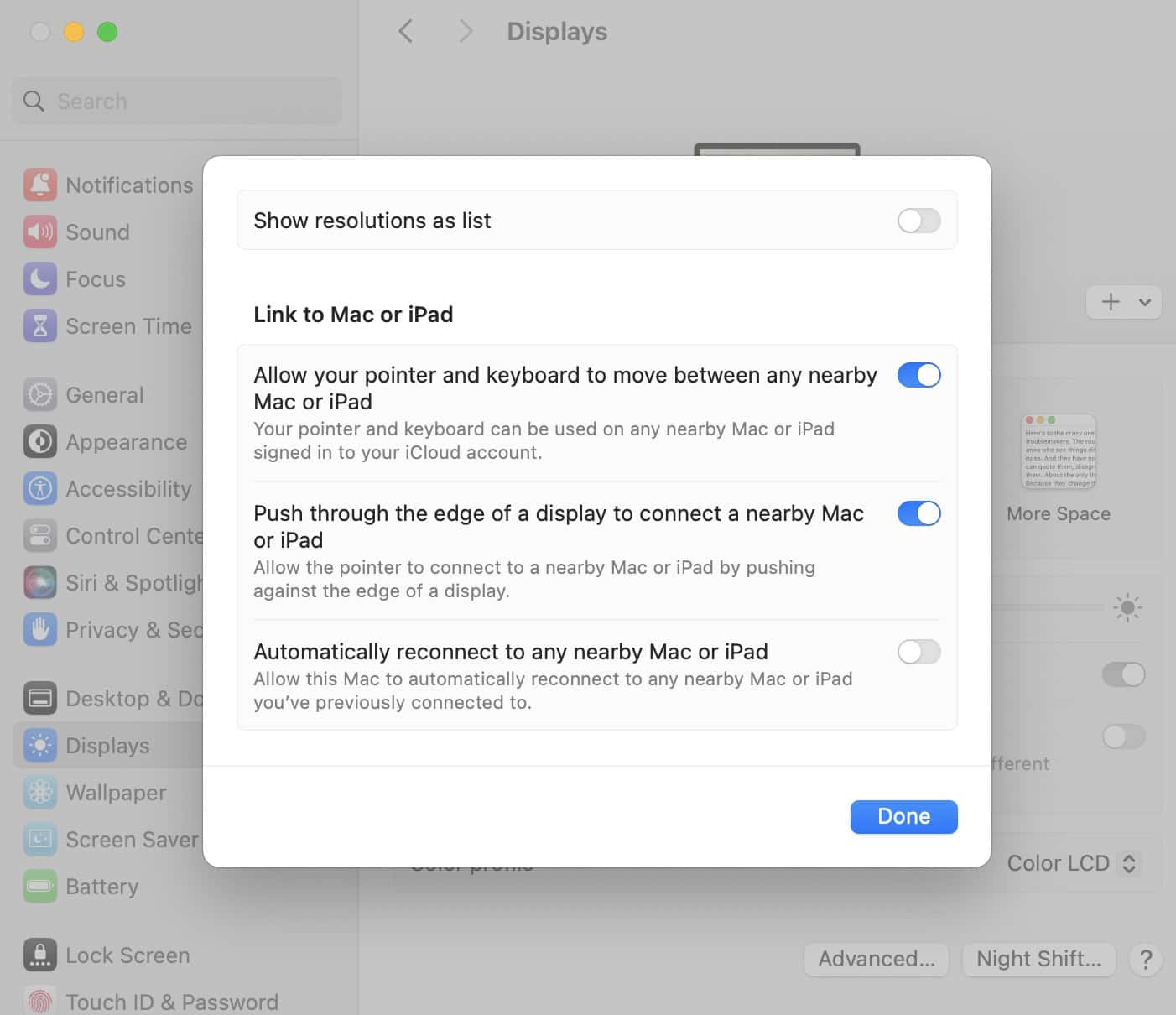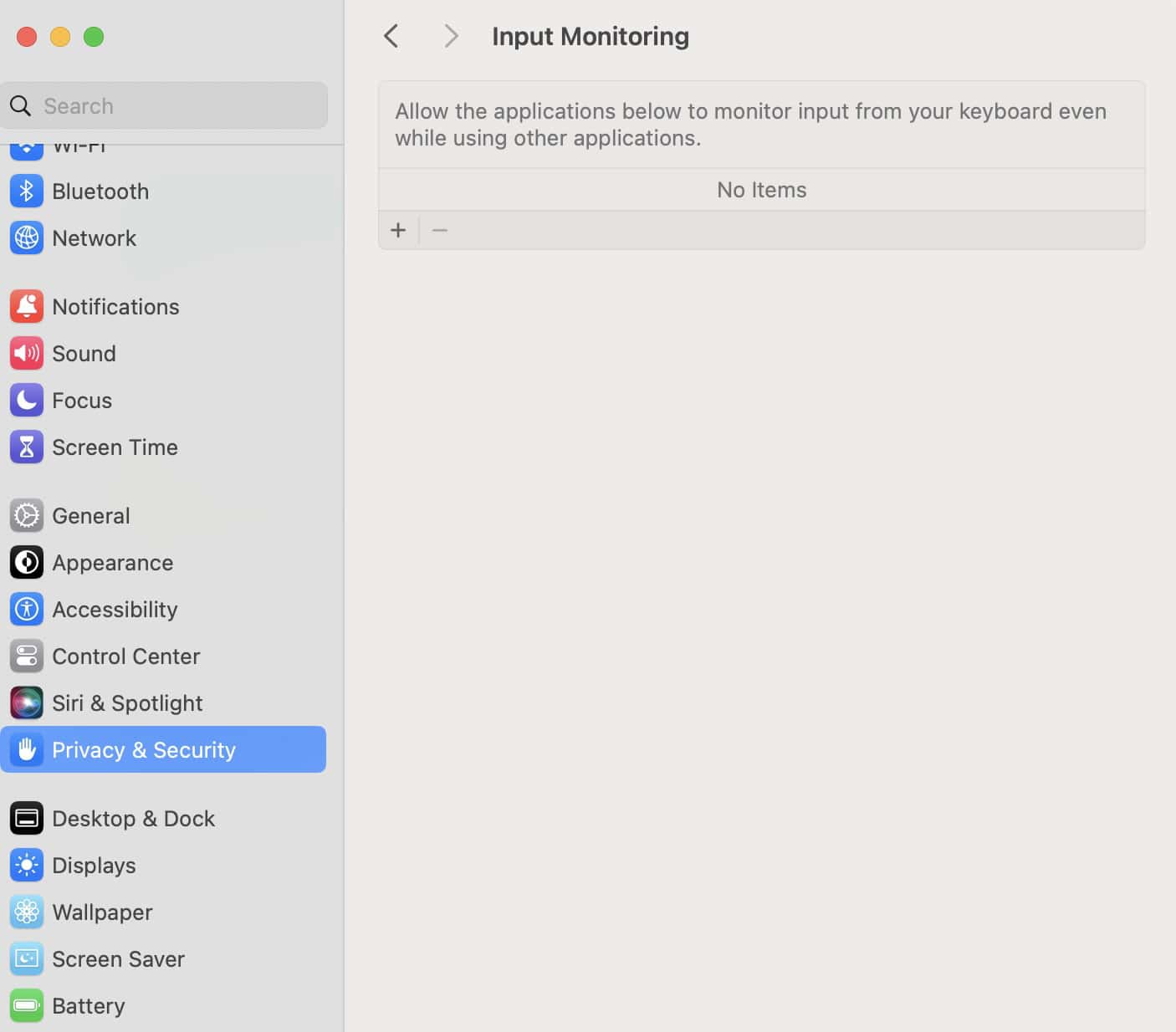OnVUE, Pearson VUE’s online proctoring software, allows you to take certification exams remotely, offering the convenience of testing from your own space. It’s generally designed to work seamlessly on macOS, but like any software, it’s not immune to issues. If it starts freezing or glitching, it could compromise your testing experience, potentially affecting your performance or the exam outcome.
Taking exams can be stressful enough without these hiccups. Let’s dive into some quick and easy solutions to get this online testing platform running smoothly on your machine.
How To Fix OnVUE Crashing and Freezing on Mac
1. Check and Grant Permissions
Time needed: 2 minutes
Before anything else, check your application permissions. OnVUE won’t work if it doesn’t have access to your microphone, camera, and input monitoring. Follow these steps:
- Click the Apple menu icon > System Settings.
- Scroll down to Privacy & Security in the side navigation pane.
- Open Camera and toggle on the button for OnVUE—repeat with the section for microphone permissions.
- Go back to Privacy & Security > Input Monitoring, click the plus symbol (+), enter your password, and look for OnVUE.
 NOTE
NOTE
2. Set Chrome as Your Default Browser
Check if your browser is incompatible with specific apps. Personally, I like how Safari blends seamlessly with the macOS environment, but it’s frustrating how many third-party programs it doesn’t support. The best approach is to switch to Chrome. Its broad support for web-based applications makes it less likely to run into bugs and glitches.
- Launch Chrome and click the vertical ellipsis icon (⋮) > Settings.
- Select Default Browser in the side navigation pane.
- Click Make Default.
3. Allow Cookies and Pop-Ups in Chrome
Most third-party apps will struggle to load in-platform components if essential cookies are blocked or pop-ups are disabled. Enable these features to avoid interruptions while troubleshooting. Don’t worry—it’s generally safe to enable cookies and pop-ups for trusted sites and apps.
- Launch Chrome and click the vertical ellipsis icon (⋮) > Settings.
- Select Privacy and Security in the side navigation pane.
- Open Site Settings > View permissions and data stored across sites and allow pop-ups on OnVUE.
- Go back to Privacy and Security, open Third-Party Cookies, and tick Allow Third-Party Cookies.
4. Turn Off Stage Manager
Stage Manager, a macOS feature designed to organize and switch between open apps, can sometimes cause lagging or freezing. Temporarily disable it while troubleshooting to minimize interferences and isolate errors.
- Click the Apple menu icon > System Settings.
- Select Desktop & Dock in the side navigation pane.
- Toggle off the button for Stage Manager.
5. Disable Universal Control
Universal Control lets you use a single mouse and keyboard across linked Apple devices seamlessly. Although convenient, it can also make it harder to control your pointer when jumping between several windows. Turning it off can help conserve system resources and keep your focus on your Mac.
- Open System Settings and go to Displays.
- Click Advanced… at the bottom of the window.
- Untick the box next to Allow your pointer and keyboard to move between any nearby Mac or iPad.
6. Move OnVue to the Applications Folder
Running apps from the Downloads folder isn’t always ideal because macOS treats it as a temporary space. Launched apps might have permission restrictions or limited functionality. Instead, move installation files to a more stable, trusted location like the Applications folder.
- Open Finder and go to your Downloads folder.
- Drag the app to the Applications folder.
- Launch from the Applications folder and see if the app still crashes.
7. Adjust Input Monitoring Permissions
Input monitoring allows certain apps to track your keyboard and mouse activity, which can be useful for shortcuts. While these apps generally don’t interfere with other programs, they might cause unexpected issues, especially with something as sensitive as exam software. Having multiple apps monitor input at the same time can cause slowdowns. It’s best to turn it off for other apps while troubleshooting.
- Click the Apple menu icon > System Settings.
- Scroll down to Privacy & Security in the side navigation pane.
- Open Input Monitoring, click the minus symbol (-), enter your password, and deselect all the other third-party apps.
Should issues persist, reach out to Pearson. Their skilled customer service team can help you navigate the platform with confidence.

